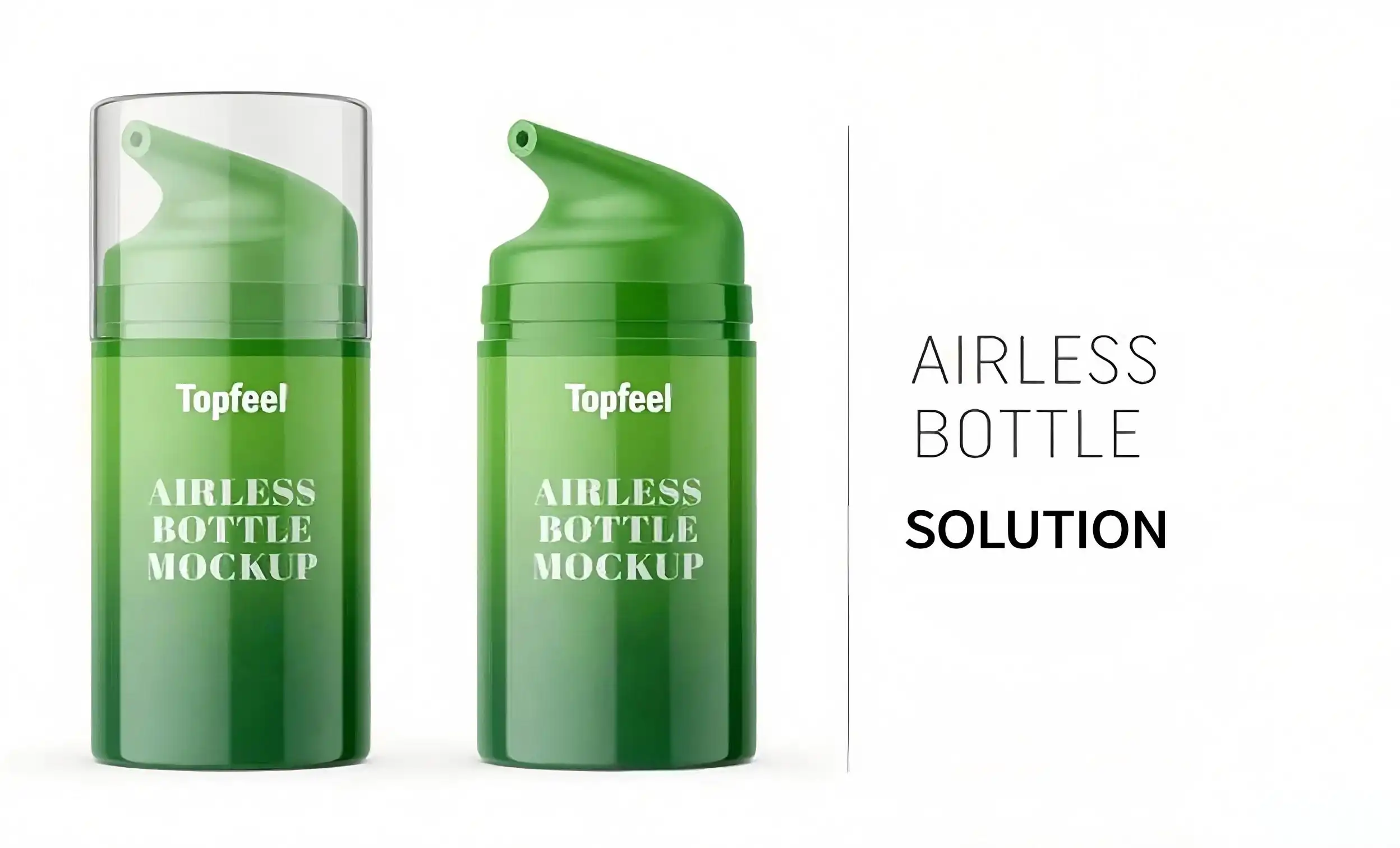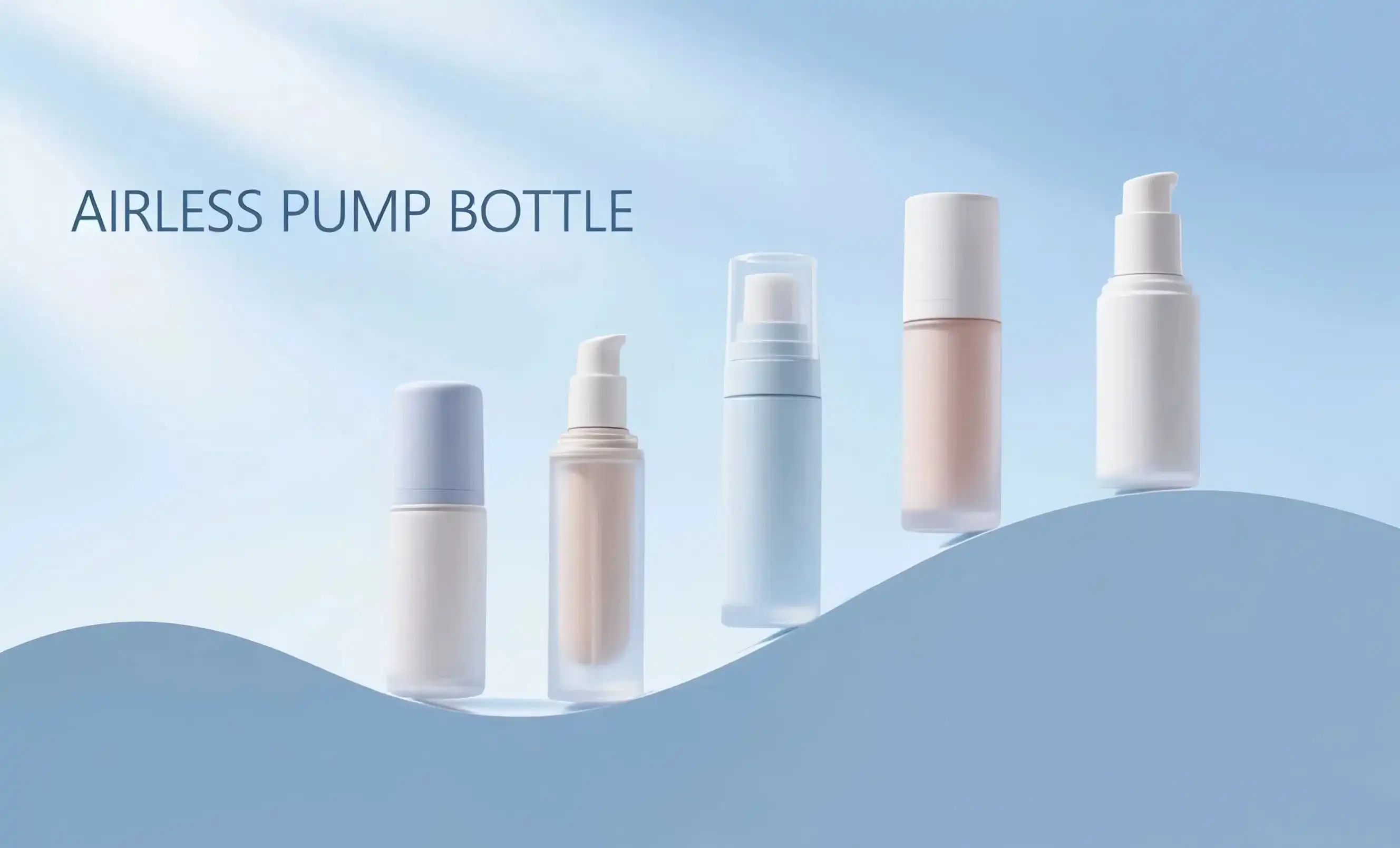The Science Behind Plastic Airless Bottles: How They Preserve Skincare Formulas
The preservation of skincare formulas is crucial for maintaining their efficacy and safety over time. Plastic airless bottles play a vital role in this preservation process through their unique design and functionality.
Vacuum-Sealed Environment
At the core of airless pump technology is the creation of a vacuum-sealed environment. This environment is maintained by a piston or flexible pouch system that moves upward as the product is dispensed. The vacuum seal prevents air from entering the bottle, effectively shielding the contents from oxidation and microbial contamination.

Protection Against Oxidation
Oxidation is a major concern for many skincare ingredients, particularly antioxidants, vitamins, and certain plant extracts. When exposed to air, these components can break down, reducing their effectiveness. The airless system in plastic bottles minimizes this risk by limiting air contact, thereby preserving the potency of these sensitive ingredients.
Minimizing Contamination Risks
Traditional pump bottles often require air intake to function, which can introduce contaminants. Airless pumps eliminate this need, significantly reducing the risk of bacterial growth within the product. This feature is particularly beneficial for preservative-free or minimally preserved formulations.
Consistent Dosage Delivery
The vacuum-driven dispensing mechanism ensures that a consistent amount of product is delivered with each pump. This precision not only helps in maintaining the intended efficacy of the formula but also prevents overuse, extending the product's lifespan.
What Makes Plastic Airless Bottles Prevent Oxidation and Contamination?
The prevention of oxidation and contamination in skincare products is crucial for maintaining their quality and effectiveness. Plastic airless bottles incorporate several features that contribute to this protective function.
Airtight Sealing Mechanism
The heart of the airless bottle's protective capability lies in its airtight sealing mechanism. This system creates a barrier between the product and the external environment, effectively blocking air and potential contaminants from entering the bottle. The seal is maintained throughout the product's use, ensuring continuous protection.
Non-Reactive Materials
High-quality plastic airless bottles are typically made from materials that are chemically inert and non-reactive. This characteristic is crucial as it prevents any unwanted interactions between the bottle material and the product contents, which could otherwise lead to degradation or contamination of the formula.
UV Protection
Many airless bottles are designed with UV protection in mind. Some are made from opaque or tinted plastics that can shield light-sensitive ingredients from UV radiation, which can cause oxidation and breakdown of certain compounds. This feature is particularly important for products containing retinoids, vitamins, or other photosensitive ingredients.
Hygienic Dispensing System
The airless pump mechanism dispenses product without requiring the user to dip their fingers into a jar or allowing air to flow back into the container. This design minimizes the introduction of external contaminants and reduces the need for high levels of preservatives in the formula.
Are Plastic Airless Bottles More Effective Than Glass for Serums?
When it comes to packaging serums, both plastic airless bottles and glass containers have their merits. However, plastic airless bottles often edge out glass in several key areas, making them a preferred choice for many skincare brands.
Preservation of Active Ingredients
Serums often contain high concentrations of active ingredients that are susceptible to oxidation. The airless technology in plastic bottles provides superior protection against air exposure compared to traditional glass droppers or pump bottles. This preservation capability ensures that the serum remains potent throughout its use.
Convenience and Safety
Plastic airless bottles are lightweight and shatter-resistant, making them more convenient for travel and safer for everyday use. This is particularly advantageous for serums, which are often used in bathroom settings where glass bottles could pose a safety risk if dropped.
Precise Dispensing
The airless pump mechanism in plastic bottles allows for more precise dispensing of serums compared to glass droppers. This precision is crucial for serums, where overuse can be wasteful and potentially irritating to the skin. The consistent dosage also helps users follow recommended application amounts more accurately.
Compatibility with Various Formulations
Plastic airless bottles can accommodate a wide range of serum viscosities, from water-like to gel-like consistencies. This versatility makes them suitable for various serum formulations, whereas glass bottles with droppers may struggle with thicker products.
Cost-Effectiveness and Sustainability
While glass is often perceived as more premium, plastic airless bottles can be more cost-effective for brands, especially when considering shipping and potential breakage. Additionally, advancements in recyclable and PCR (post-consumer recycled) plastics are making these bottles increasingly sustainable options.
In conclusion, while both plastic and glass have their place in serum packaging, the unique benefits of plastic airless bottles – including superior ingredient preservation, convenience, precise dispensing, and versatility – often make them the more effective choice for modern skincare formulations.
Are you a skincare brand owner, product manager, or cosmetics manufacturer looking for innovative packaging solutions? Topfeelpack offers advanced plastic airless bottles designed to meet your specific needs. Our commitment to sustainability, fast customization, and competitive pricing sets us apart in the industry. Whether you're launching a new product line or seeking to improve your existing packaging, we have the expertise to help. Contact us today at pack@topfeelgroup.com to discover how our airless bottle solutions can enhance your product's shelf life, maintain its efficacy, and align with your brand image. Let's work together to create packaging that not only protects your formulas but also resonates with your target market.
References
- Johnson, A. (2022). Advancements in Cosmetic Packaging: The Rise of Airless Technology. Journal of Cosmetic Science, 73(4), 215-228.
- Smith, B., & Brown, C. (2021). Comparative Study of Packaging Materials in Skincare Preservation. International Journal of Cosmetic Engineering, 12(2), 87-102.
- Lee, S. et al. (2023). The Impact of Packaging on Skincare Product Stability and Efficacy. Cosmetics & Toiletries, 138(5), 32-41.
- Garcia, M. (2022). Sustainability in Beauty: Eco-friendly Packaging Solutions. Green Cosmetic Technology, 9(3), 155-170.
- Taylor, R. (2021). Consumer Perceptions of Cosmetic Packaging: A Market Research Analysis. Beauty Industry Report, 45(2), 78-93.
- Wong, L., & Chen, H. (2023). Innovations in Airless Pump Technology for Cosmetic Applications. Packaging Science and Technology, 36(1), 12-25.

 - 副本_1745399213966.webp)

_1747827716538.webp)

